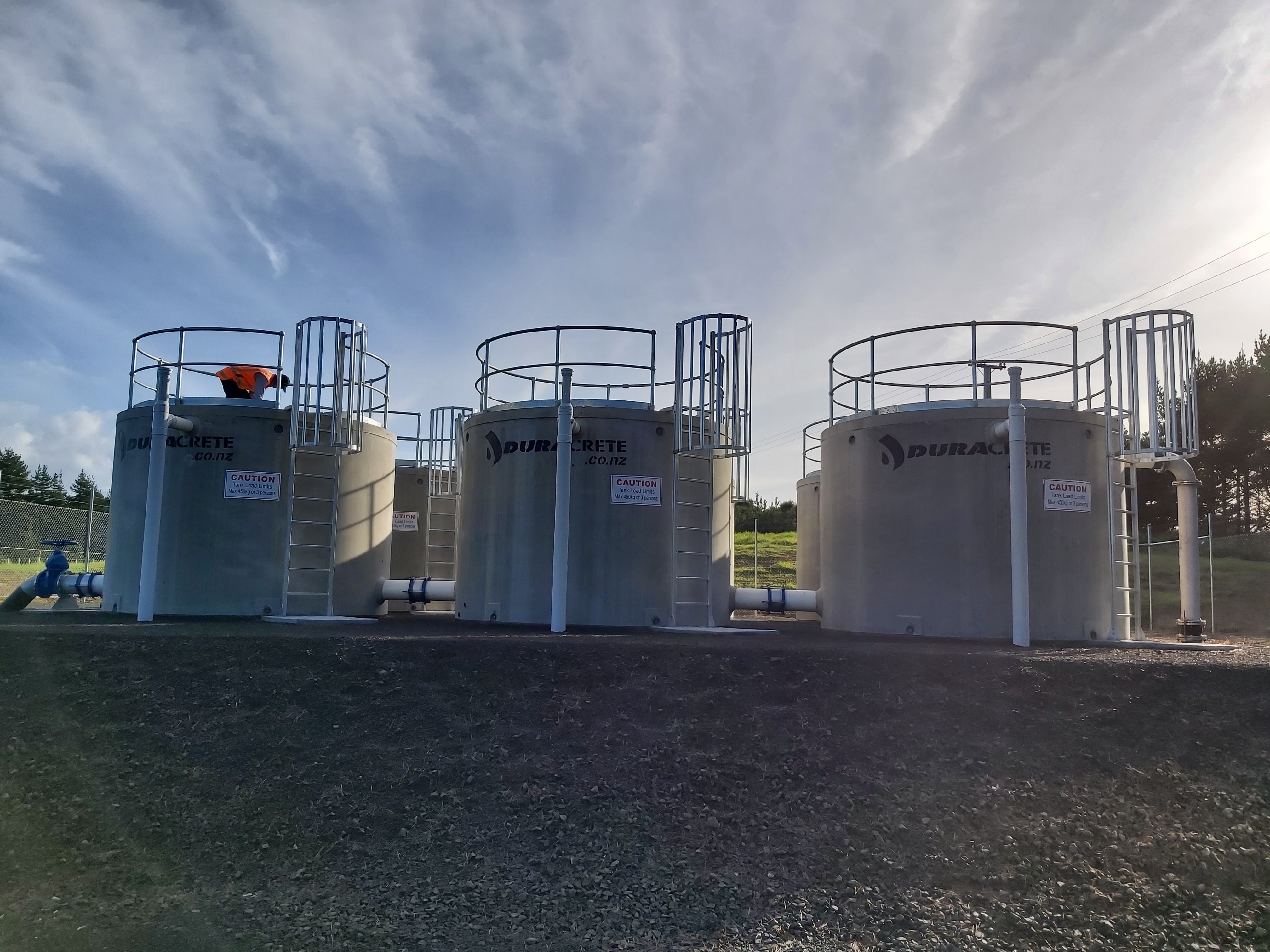Kaitāia Water Project
Update
This project is now completed. Information on the Sweetwater Bore and Pipeline built by this project can be found here.
Kaitāia Water Project details
| Project type | Water supply infrastructure |
| Project value | $15.3 million |
| Project status | Completed |
The goal of the Kaitāia Water Project (Sweetwater Bore and Pipeline) was to provide safe, good quality drinking water to the Kaitāia township along with the existing supply from the Awanui River. Now completed, it can supply additional water to boost the water resilience of local households and businesses in Kaitāia. The total project cost was $15.3 million.
The project turned two temporary emergency bores at the Sweetwater site into permanent water sources and also created two new monitoring bores. A 14km pipeline was constructed to transport the water from the Sweetwater bores to Kaitāia’s water treatment plant on Okahu Road.
To find out more about Kaitāia's water supply go here.
The 14km pipeline - view from above
The benefits of the project
Securing a permanent supplementary water source for Kaitāia and improving its drought resilience has been a priority of the council for years and was driven by our Infrastructure and Asset Management Team.
The benefits of this project:
- the ability to provide potable water to the existing Kaitāia water distribution network
- to provide competent legacy workforce for the future of council and Northland infrastructure projects
- to stimulate the Northland economic recovery from the COVID-19 pandemic.
The scope of the project included:
- two production bores to ensure adequate supply and to allow for maintenance
- a pipeline to the water treatment plant at Okahu Road
- and a connection into the water treatment plant.
The bore site includes buffer tanks and a booster pump to convey water from the buffer tanks to the water treatment plant, along with power and telemetry.
Project official opening - June 2022
Project structures
Boresite construction: Works at the bore sites consisted of headworks stainless steel installation for two bores, connecting 390 metres of pipeline, six 25000 litre buffer tanks, a two pump pumpstation with future provision for a third pump, security fencing, a gravel access road and gravel foundations, associated earthworks and reinstatement works.
Main structure: The main structure of the pipeline is the Bonnetts Road pipe bridge. This takes the pipe across the Awanui River. The pipe bridge runs parallel to the current vehicle one-way bridge. It spans 38 metres. The pipe bridge was installed successfully in May 2022 with all connections and air valves constructed. A stainless steel pipe carrier was fabricated and fixed to the existing one-way bridge at Sandhills Road to carry water across the drain.
Transfer pipeline: The 14 km pipeline extends from the bore site, goes through three private properties, follows the road corridor, continues through another private property, then past the college, and along the road reserve until it finally reaches the water treatment plant at Okahu Road in Kaitāia. There are 29 air valves, 13 scour valves and various isolation valves along the pipeline.
Milestone one – completion of bores at Sweetwater
Phase one involved drilling bores to reach the Aupōuri aquifer at Sweetwater. This was completed by McMillan Drilling, who turned two temporary emergency bores at the Sweetwater site into permanent water sources and also created two new monitoring bores.
Milestone two - the construction of the pipeline
Phase two involved the construction of a 14 kilometre pipeline to transport the water from the Sweetwater bores to Kaitāia’s water treatment plant on Okahu Road.
Milestone three – pipe bridge crossings
There are two river crossings along the pipeline route at Sandhills Road and Bonnetts Road.
Pipes were attached to the Sandhills Road bridge with a series of engineered brackets and new wingwalls spanning 12.8 metres. A truss bridge was constructed for the pipeline at the Bonnetts Road bridge and runs parallel to the existing vehicle bridge. The pipe bridge is a triangular truss structure where the pipe sits in the centre, spanning 38 metres.
Milestone four - completion of pipeline and official opening
This project was officially opened on 20 June 2022.
Milestone five – modifications to headworks and treatment system at boresite
Additional treatment and changes to the bore headworks to improve the turbidity and hydrogen sulphide levels of the bore water. Completed by April 2023.
Our project update for October
- All construction works have been completed.
- Investigations into bore turbidity.
- On track to supply water to Kaitāia township by December 2022.
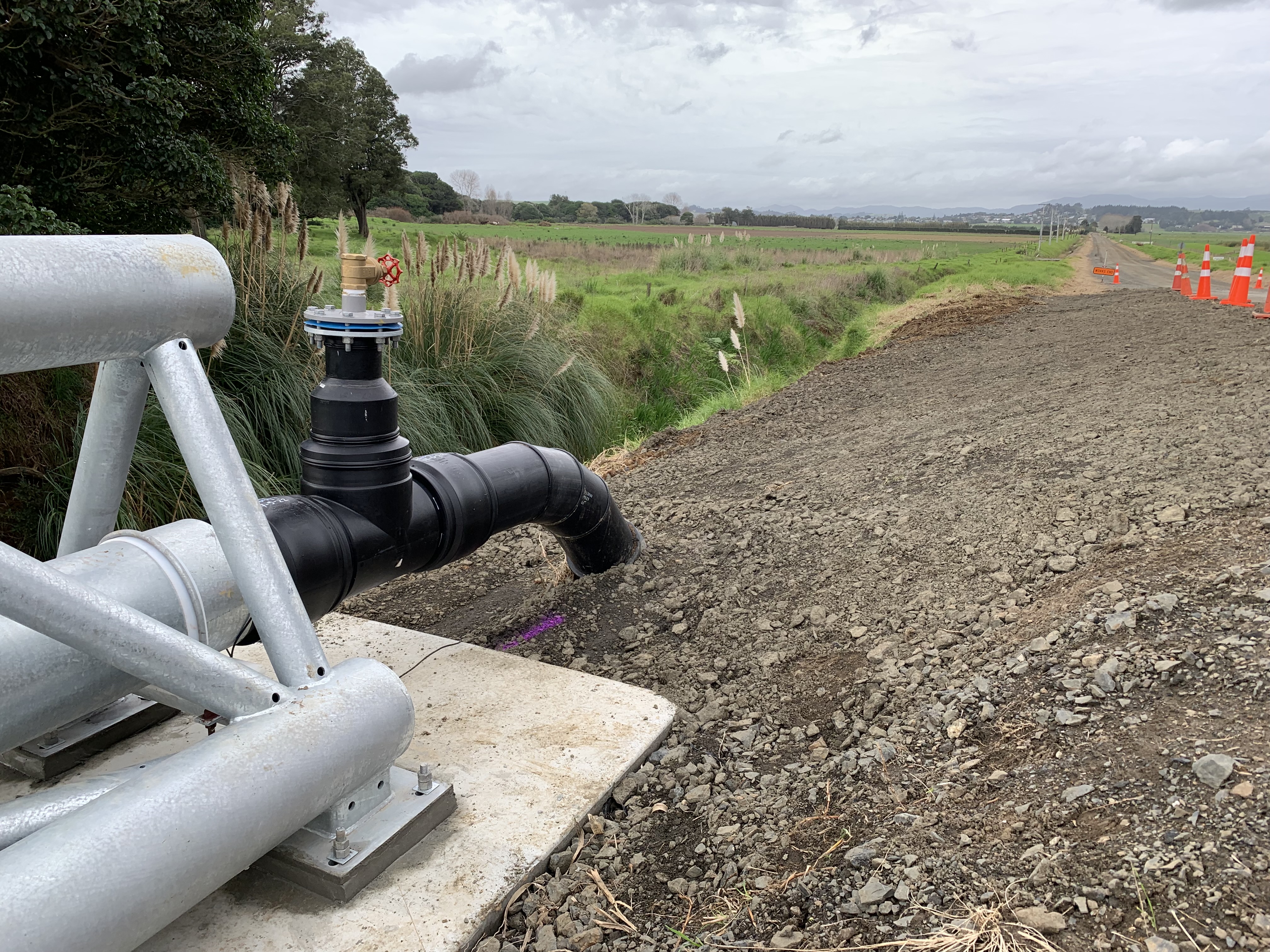
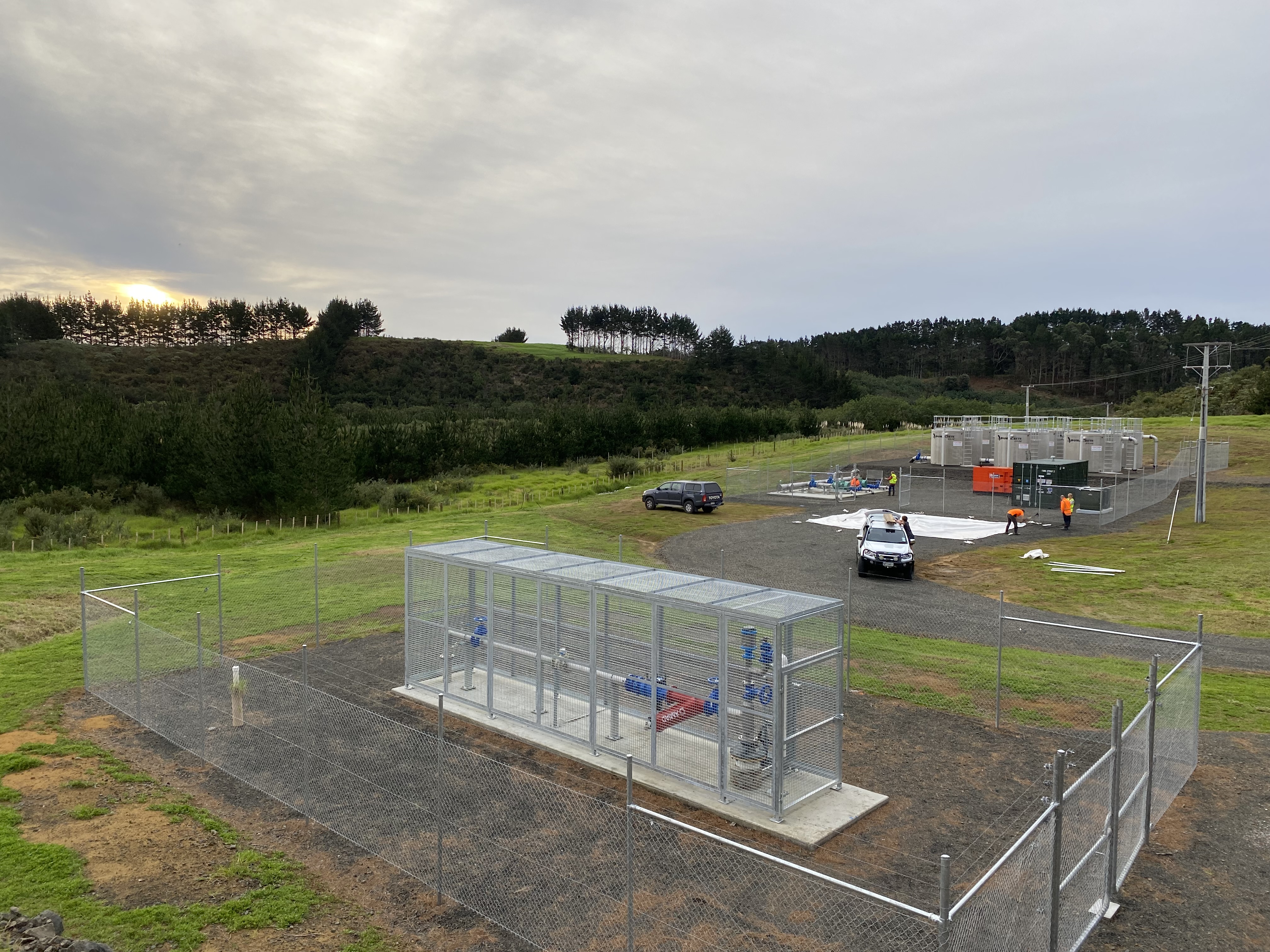
Our project update for August
- Work through private properties completed.
- Full reinstatement works completed.
- Commissioning of bores in process with investigations underway into turbidity.
- Security fencing and caging adjusted.
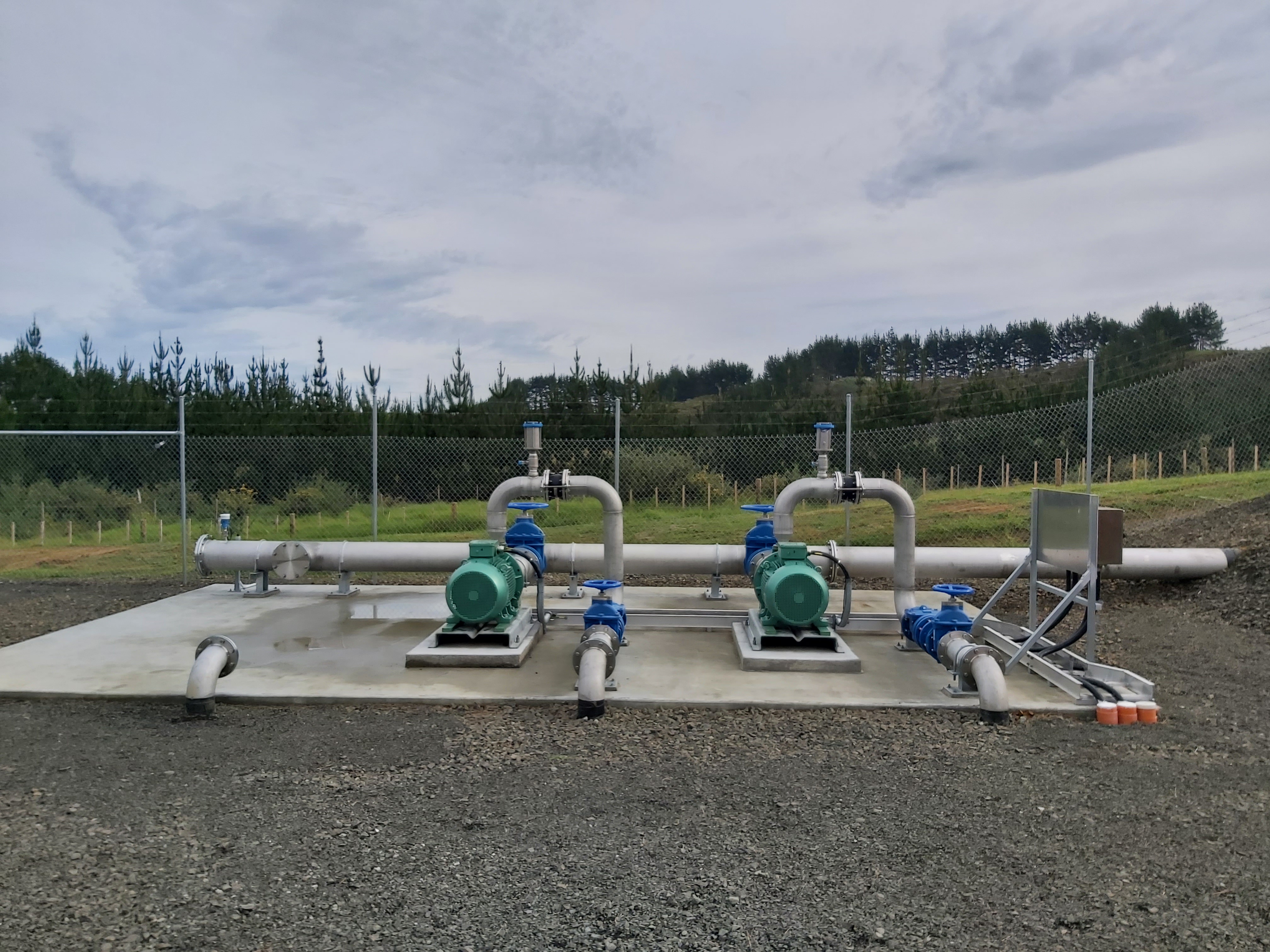
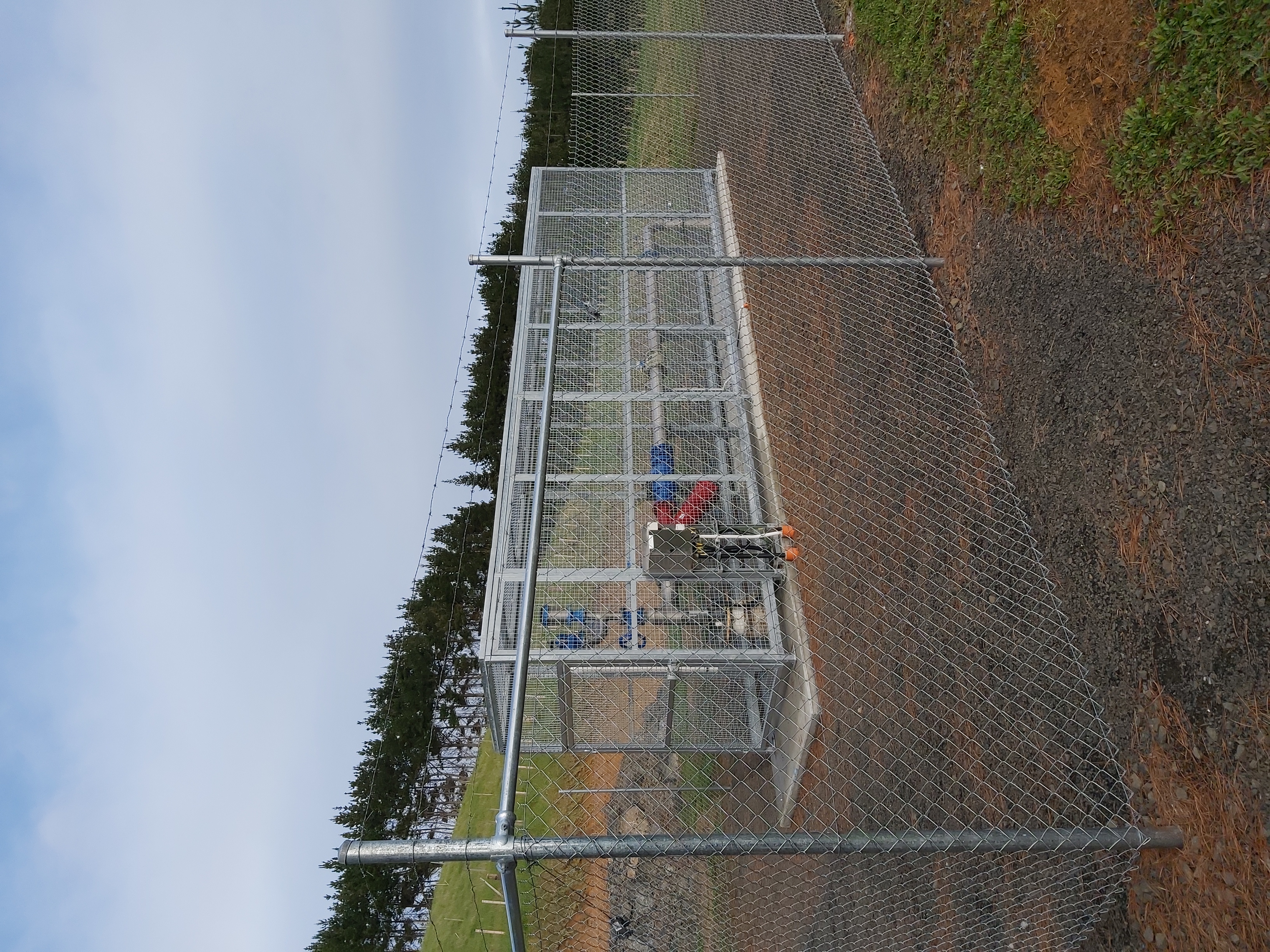
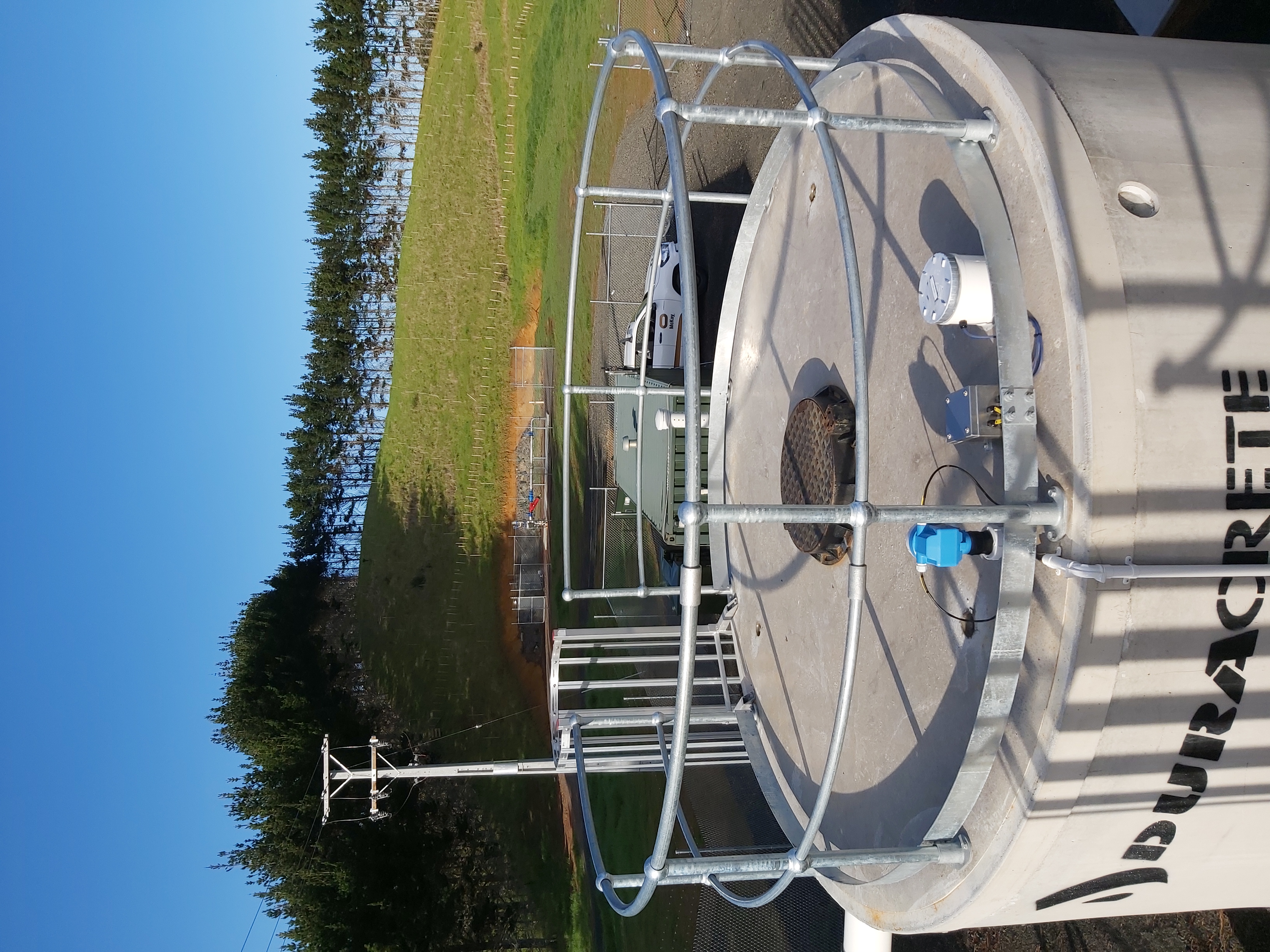
Blessing to open the Kaitāia Water Project
The official opening of the Kaitāia Water Project was marked on Monday 20 June with a blessing of the second bore and infrastructure. A 14km pipeline will carry fresh water from Sweetwater, near Awanui, to the town of Kaitāia once the pipeline becomes operational in the next few months.
The blessing was conducted by Archdeacon Fran Hokianga and Reverend Rapiata Hokianga, and was attended by local iwi, councillors, landowners, contractors and council staff.
A ribbon cutting at one of the two bore sites, followed the blessing with specially engraved shears gifted to local iwi representatives. Ngāi Takoto, Te Rarawa and Ngāti Kahu have been instrumental in helping the council to complete the Kaitāia Water Project.
The Sweetwater bores can provide extra potable water, although the Awanui River will remain the primary water supply for Kaitāia. This will significantly boost water resilience for the town, which has experienced six droughts in nine years – most recently during the record-breaking drought of 2019 to 2020.
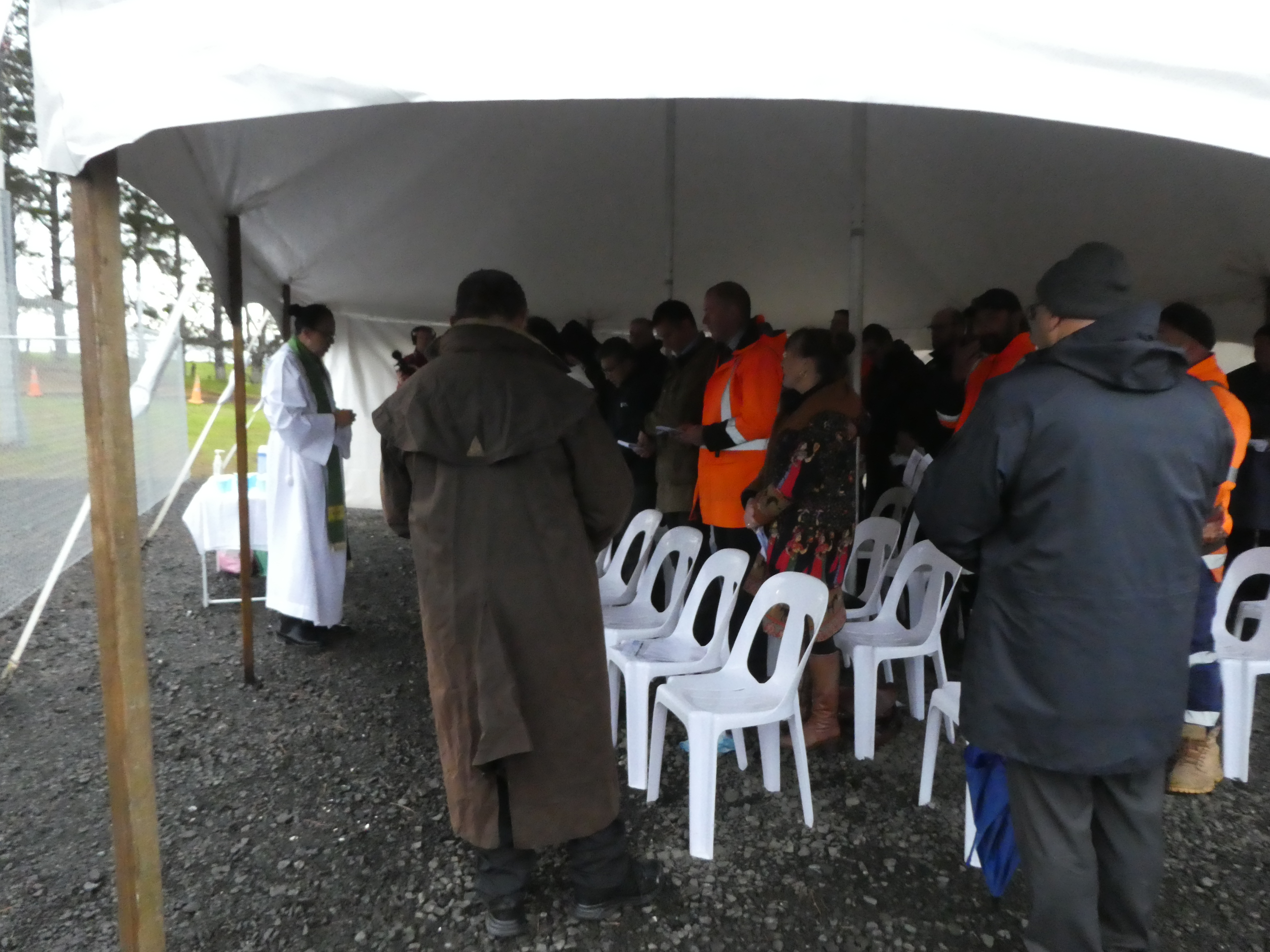
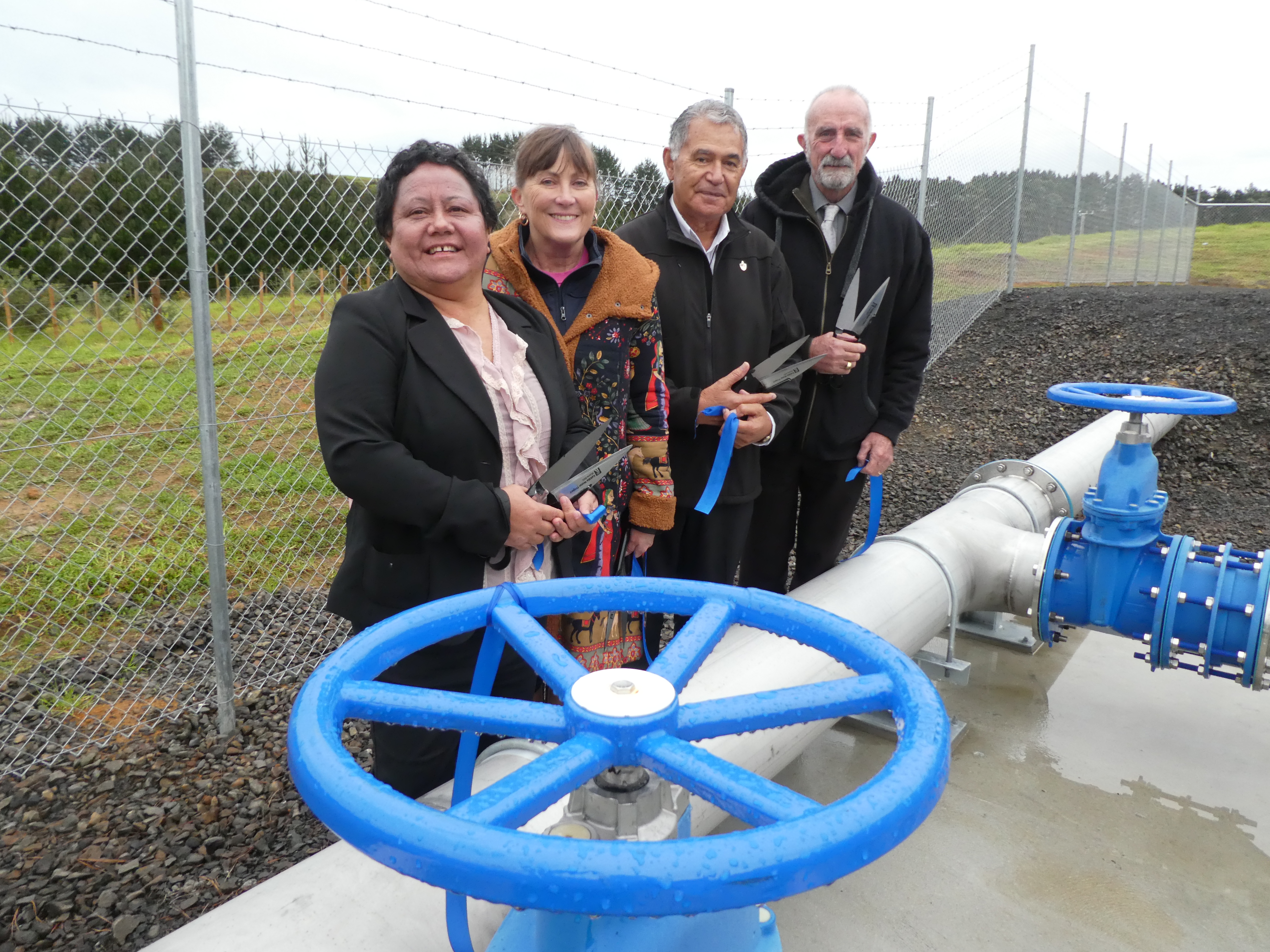
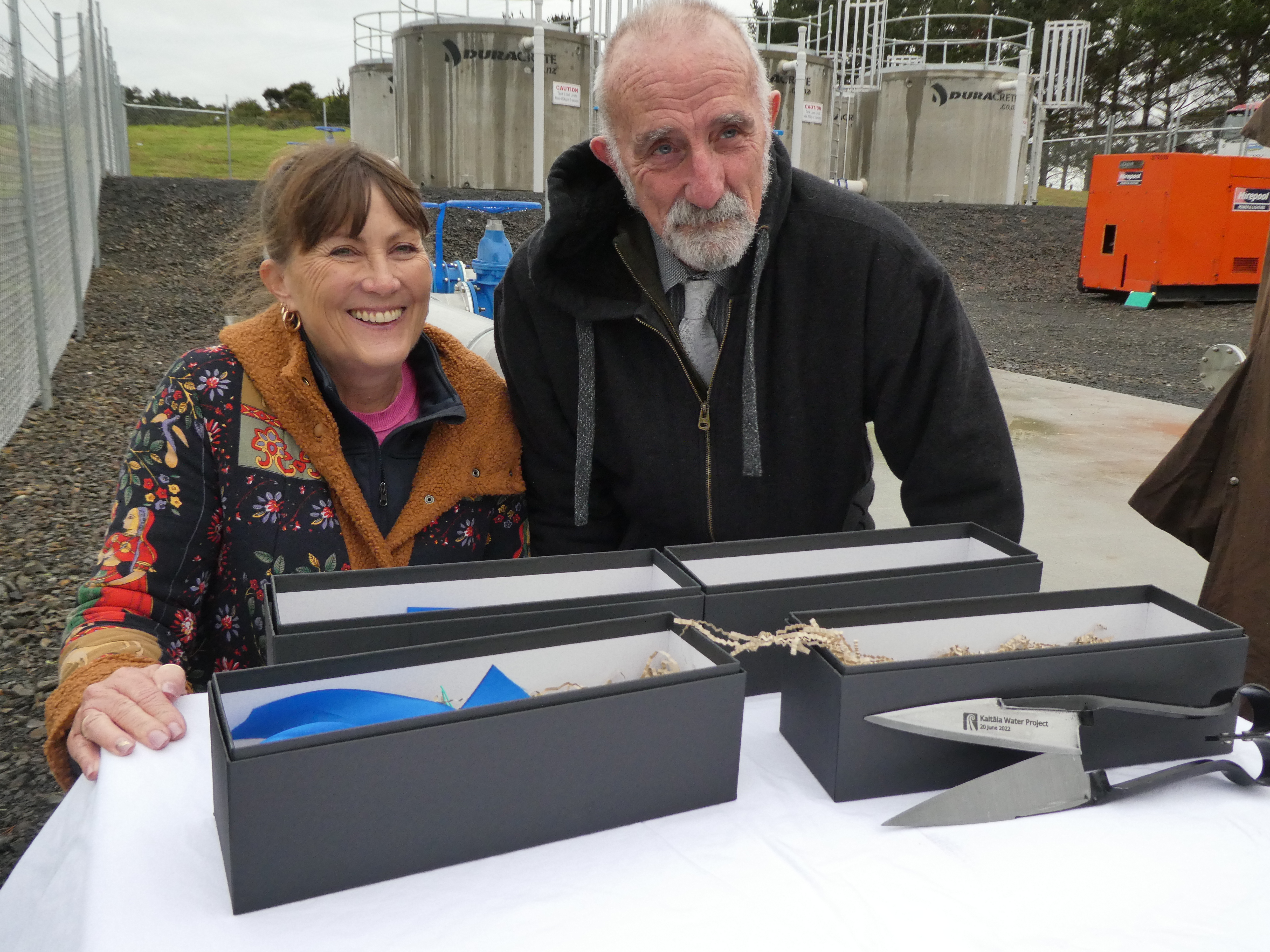
Our project update for March/April 2022
- 98% of the 14km pipeline installation is complete.
- Electrical and instrumentation installation, reinstatement works, and headworks installation are ongoing at the bore site.
- A prefabricated, galvanised truss pipe bridge will be installed at Bonnetts Road and installation will commence in April.
- The next phase of work will be the connection of the pipeline and water source to the water treatment plant.
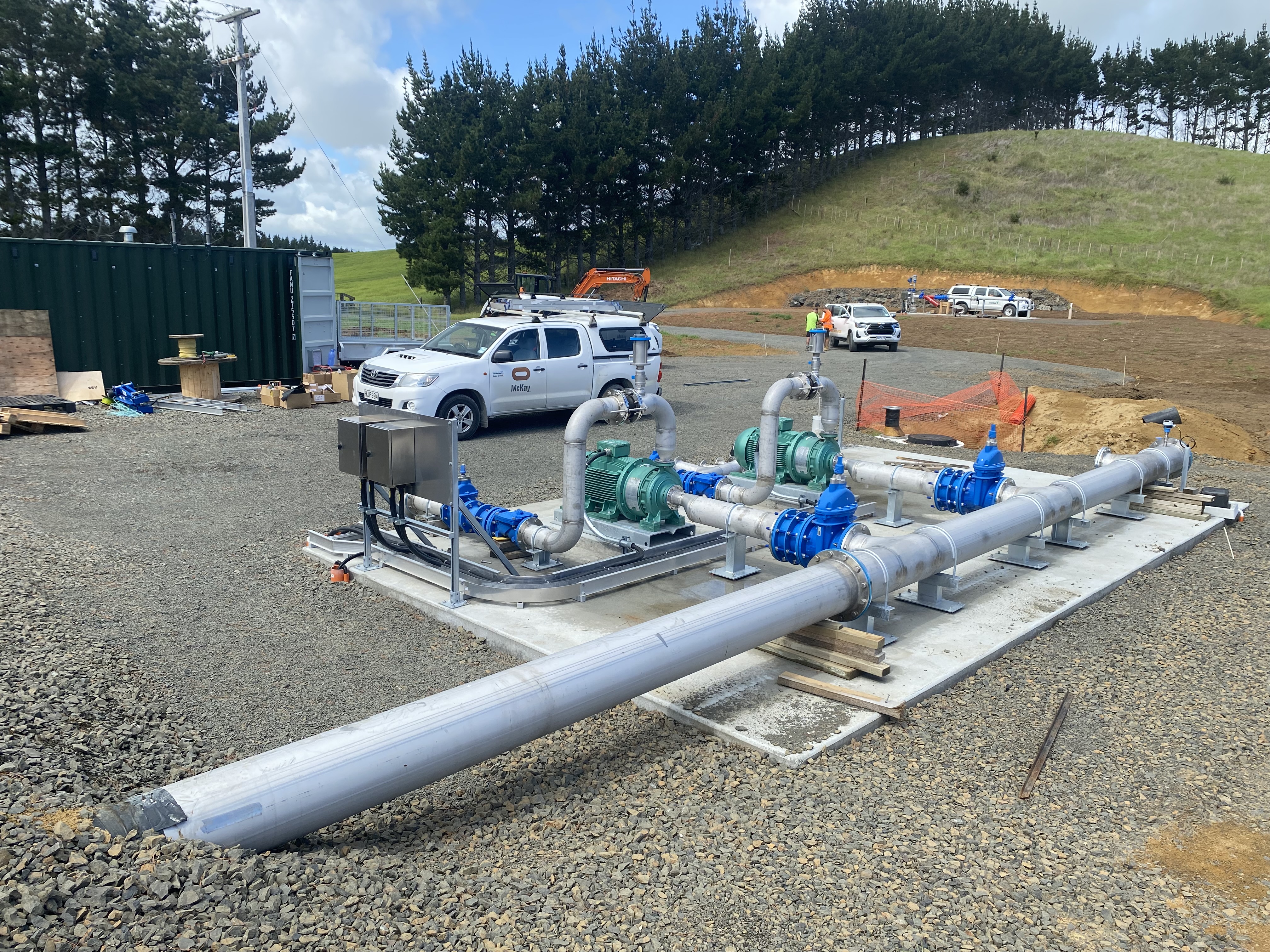
Final power and instrumentation work is now underway on the Sweetwater boreheads.
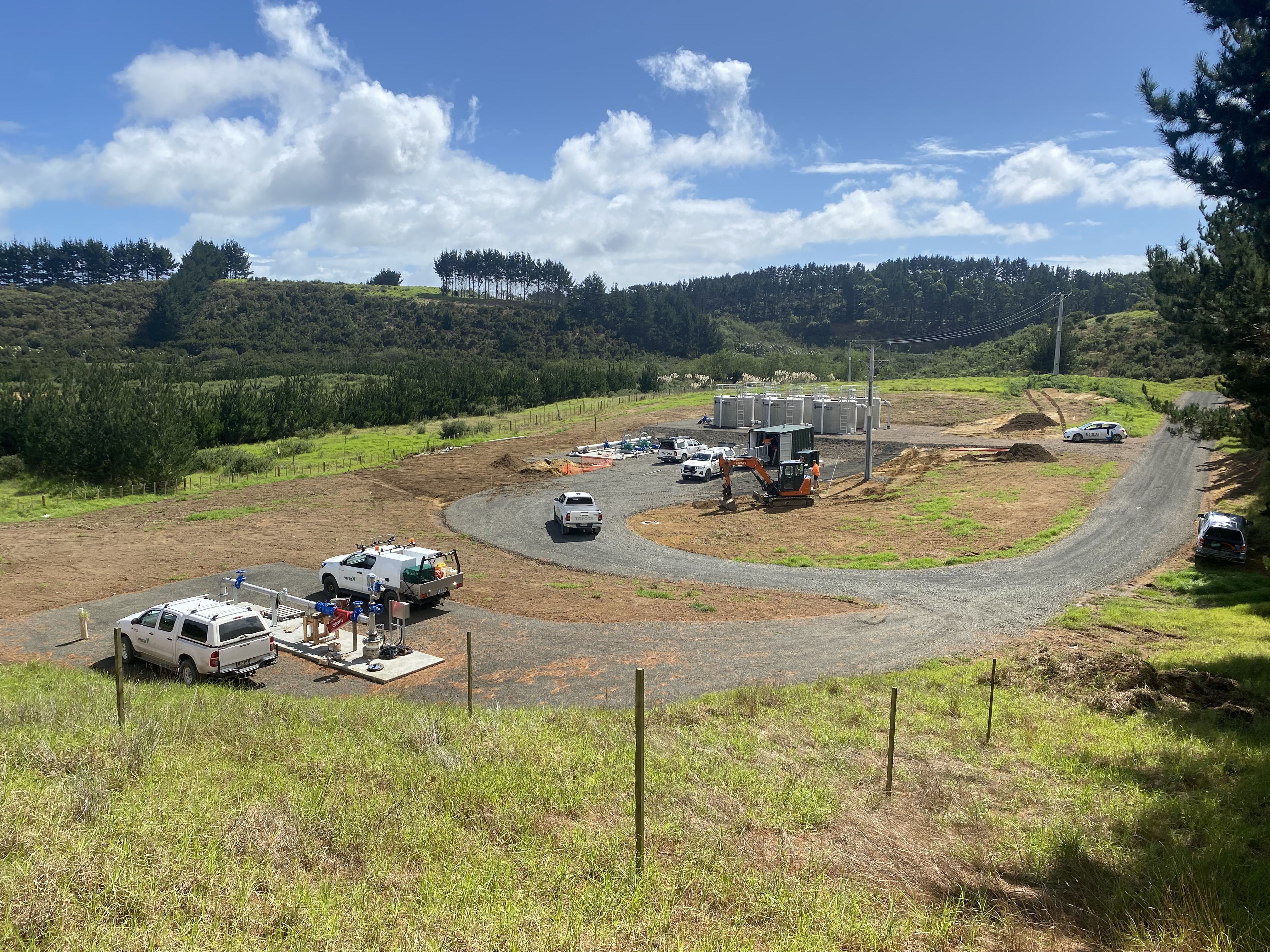
Our project update for January/February 2022
- Over 13.9km of the 14km pipeline is now in the ground.
- Ongoing support works include air valve and scour valve installation, pressure testing of the pipe sections, backfilling and remediation works.
- At the bore site, works continue with electrical and instrumentation installation as well as headworks installation.
- Bonnetts Road pipe bridge piles were installed in January with the reinforcing cage fitted in place and concrete poured.
- Testing has been undertaken on the bridge piles and now the form work for the pile caps is in place, awaiting form work installation and a concrete pour.
- The prefabricated, galvanised truss bridge is complete and stored in the engineering yard awaiting installation. This is due for March.
- The power connection to site will be completed in April which will allow for bore hole 2 to be proved.
- Water testing will tailor the water treatment process and remove any impurities to ensure the water meets drinking standards.
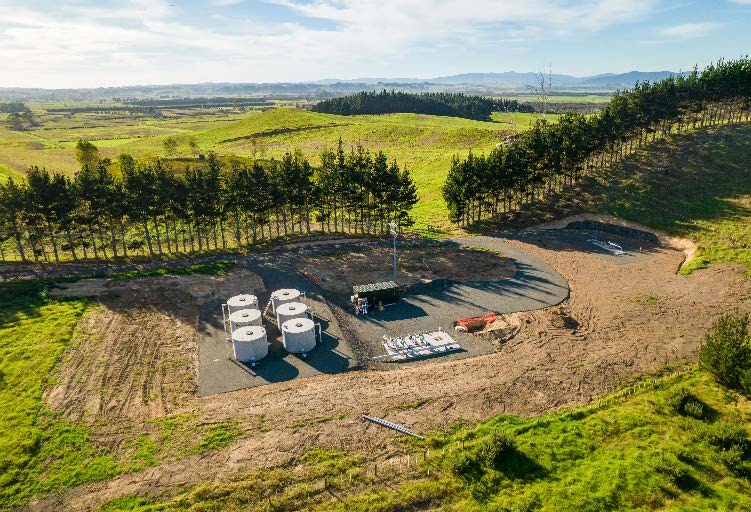
An aerial shot of of the bore site with the pump station and buffer tanks.
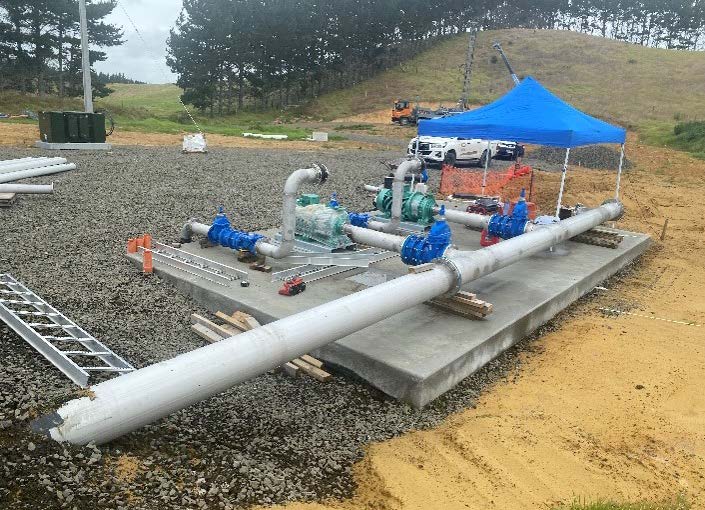
The transfer pump station being assembled.
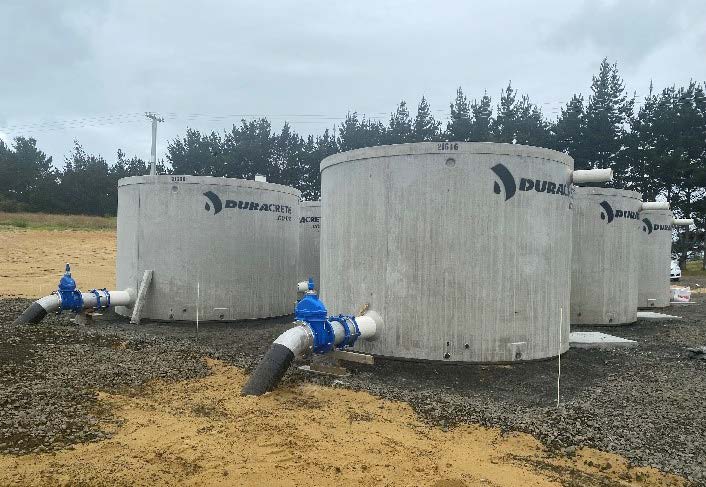
Detail of the completed transfer pump station.
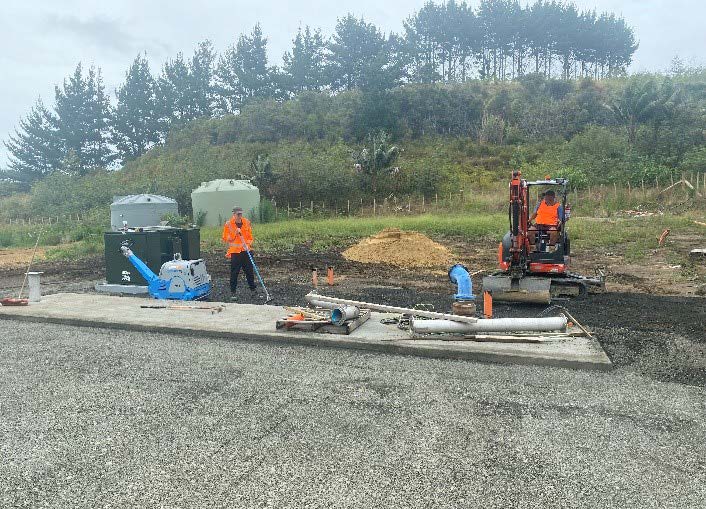
Crew tidying up and compacting metal around the bore hole.
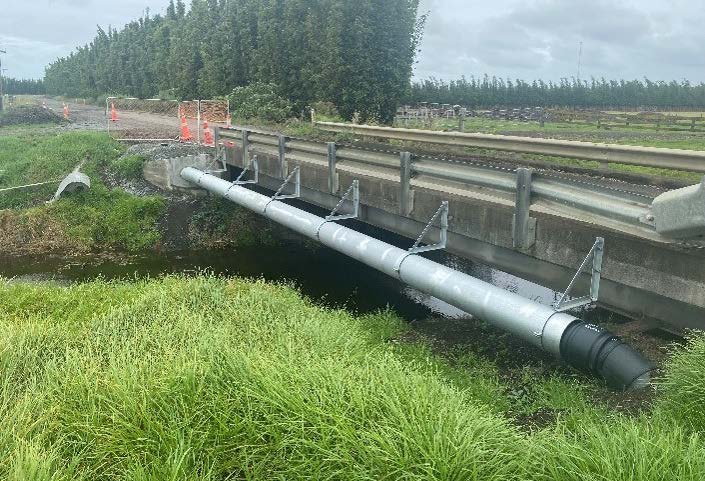
The carrier pipe along Sandhills Road.
Our project update for December
- Approximately 1800m of pipe was installed in December.
- A total of 10.9 km of pipe has now been installed (of 14 km in total).
- The Sandhills Bridge transfer pipeline is now installed.
- Installation of the pump station and associated stainless steel pipework is ongoing at the bore site.
- Buffer tanks inlet pipework is assembled into position at the bore site.
- Reinstatement works, installation of scour valve and air valve chambers and pressure testing is ongoing along Gill Road and Sandhills Road with some traffic management.
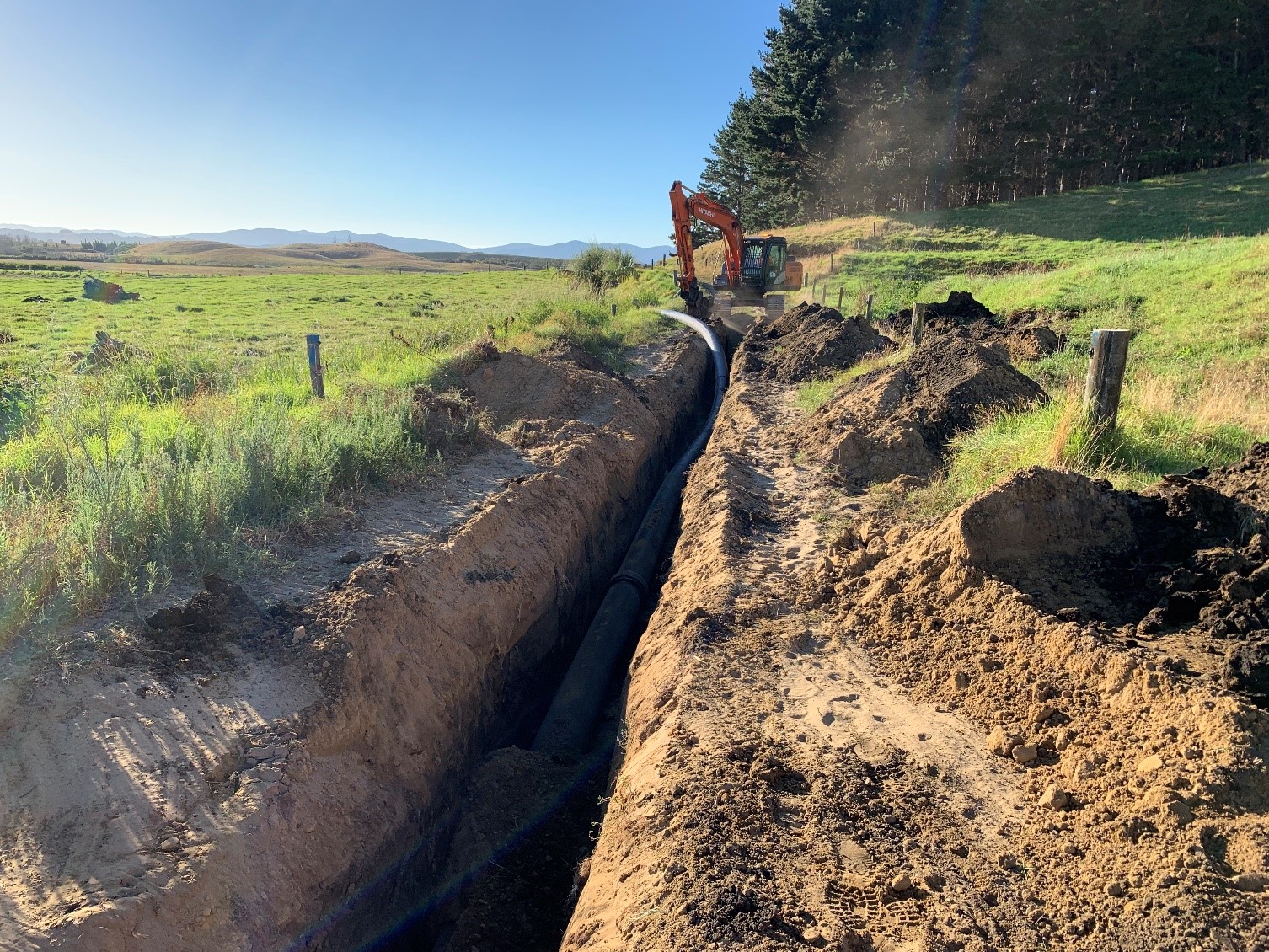
10.9 km of the 14 km pipeline has been laid.
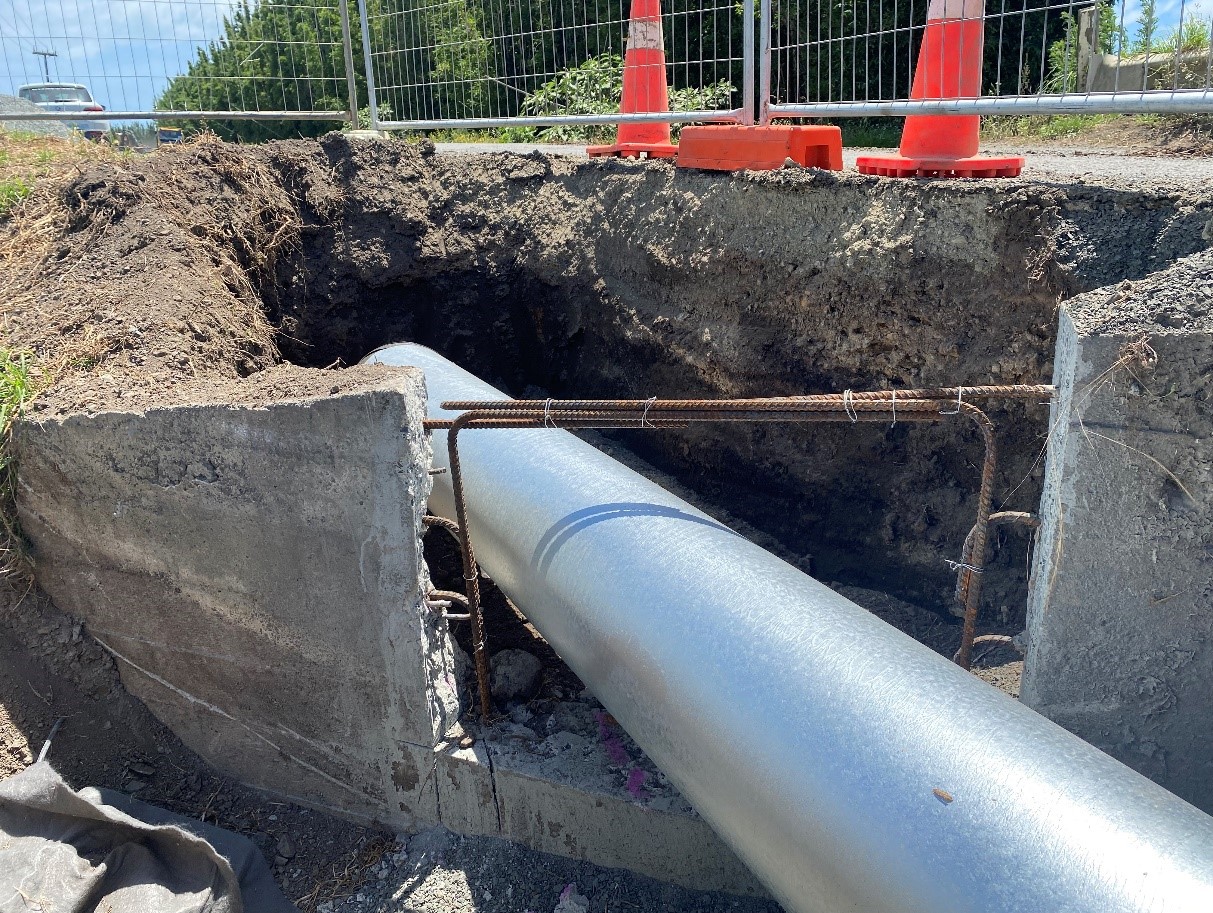
Wingwall reinforcing allowing new pipe through.
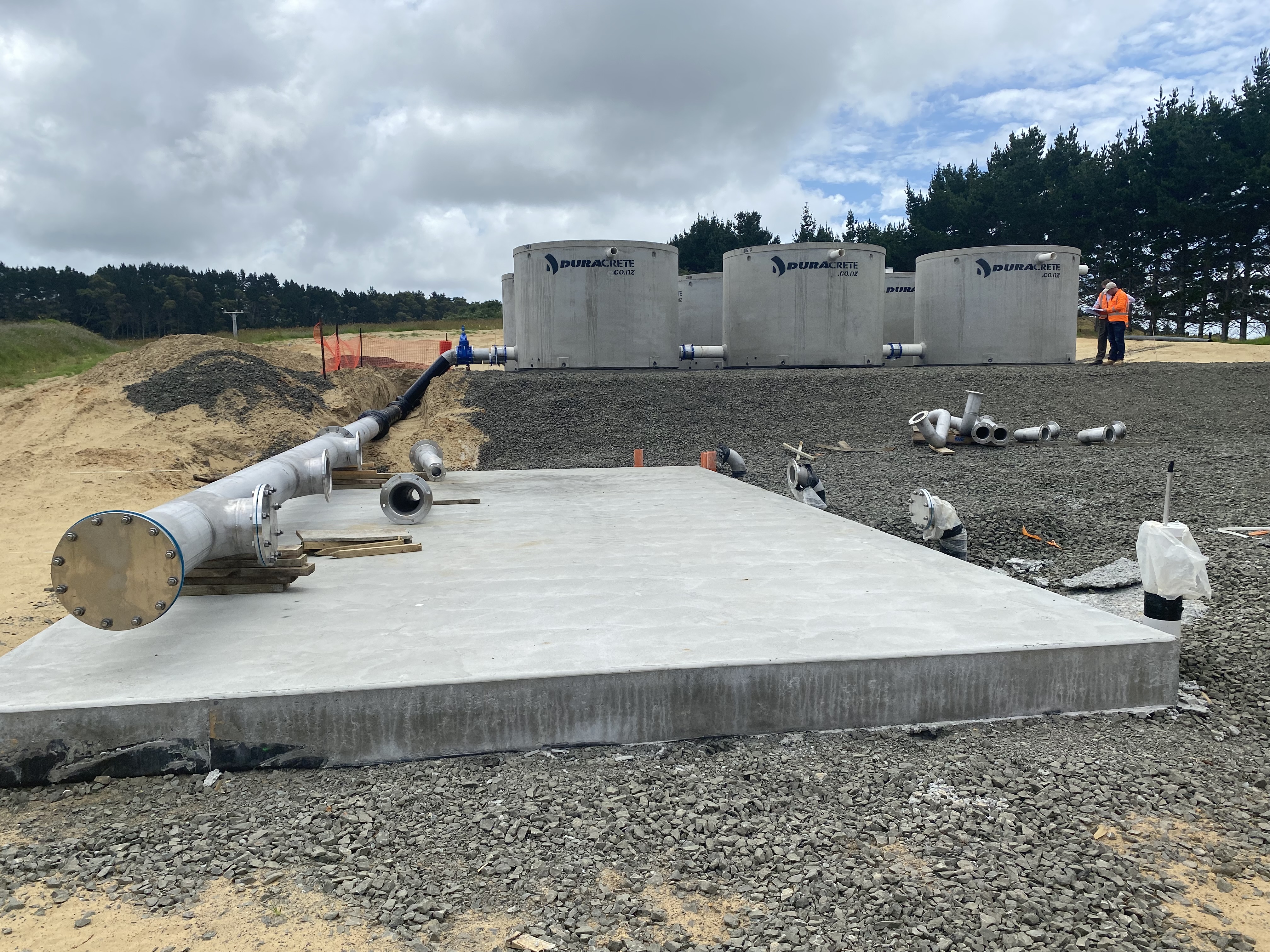
Pump station and buffer tanks at bore site.
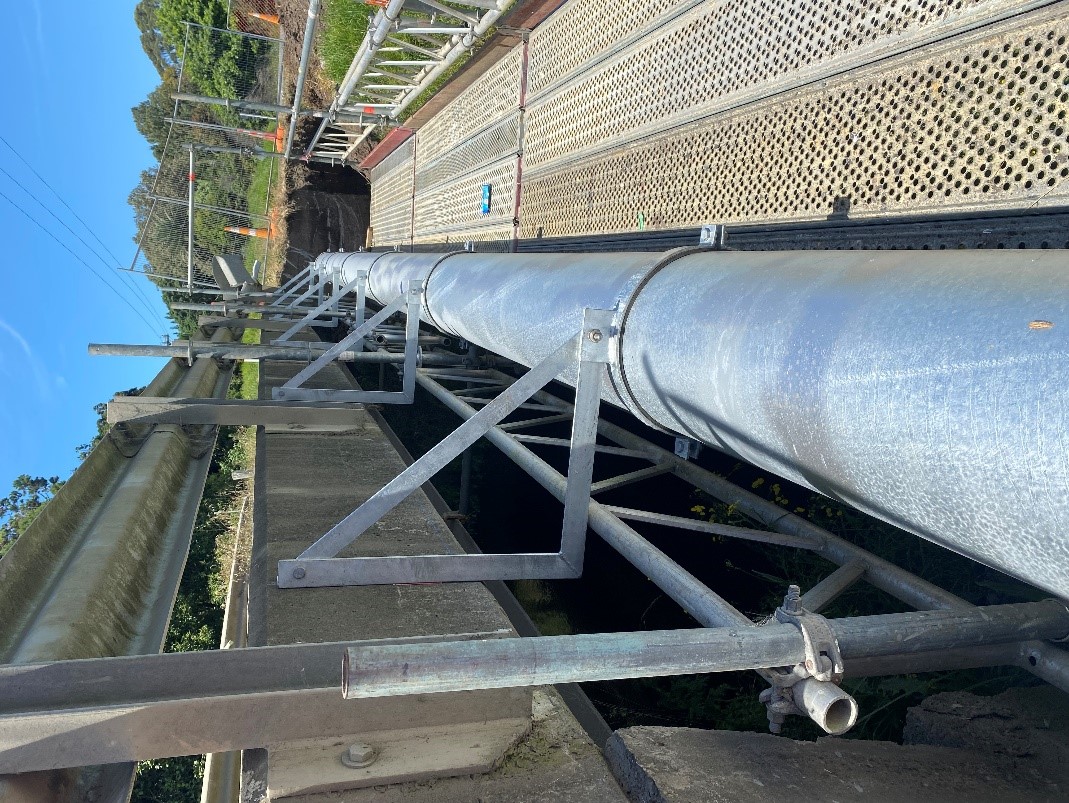
Sandhills Bridge transfer pipeline
Our project update for November
- Over 8700m of pipe has now been installed.
- A maximum of 200m of pipe a day is installed when conditions allow.
- The installation of scour valve and air valve chambers has begun along Bonnetts Rd and on to Gill Rd.
- Pressure testing is ongoing in sections for the pipe that have been installed.
- At the bore sites, platforms have been installed and access roads completed.
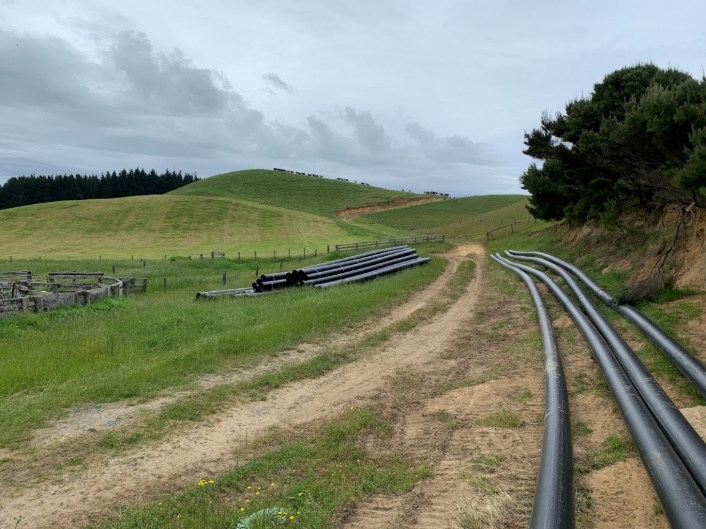
Pipe strings on Bird Road.
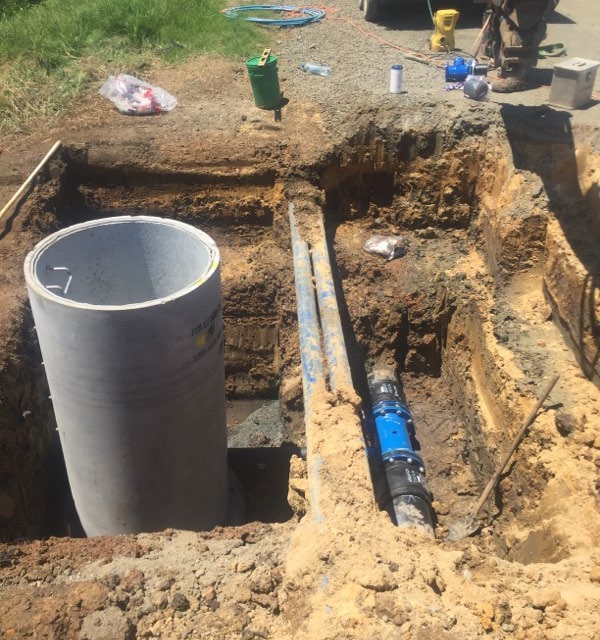
Scour valve tee and chamber installation on Bonnett Road. Existing emergency water pipelines exposed.
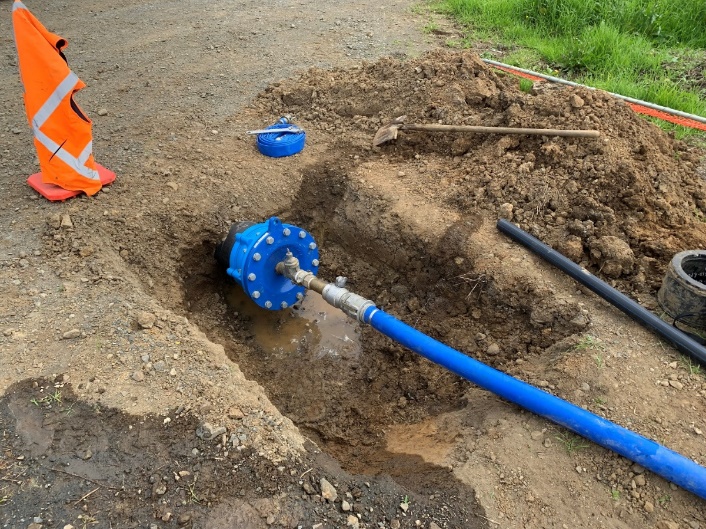
Filling for pressure testing on Gill Road.
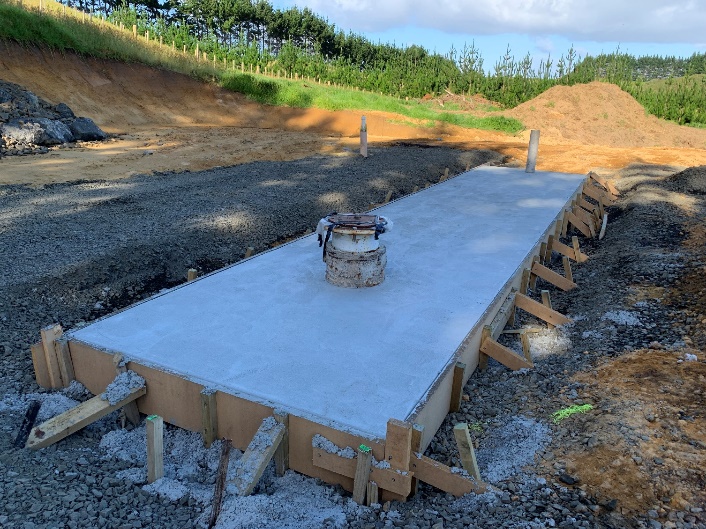
Concrete slab at Borehole 2.
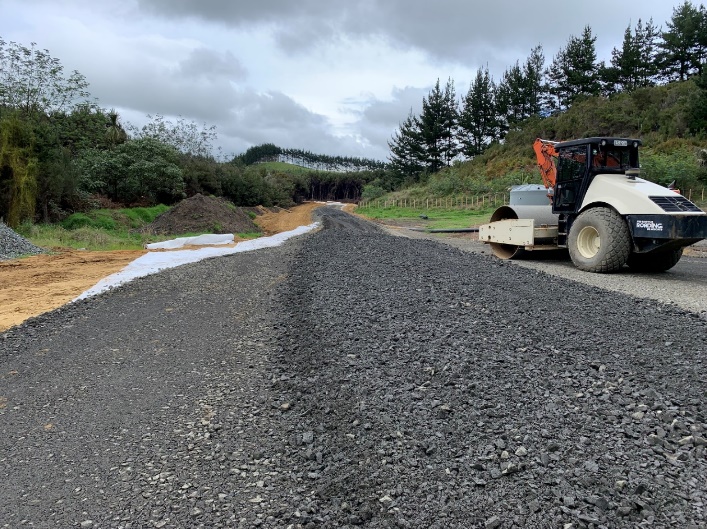
Site access track.
Our progress report for October
- Approximately 4300m of pipe is in the ground.
- Two Drill Rigs are installing up to 200m of pipe per day.
- Ducting for the underground power to site is completed.
- The bore site earthworks are complete.
- Sandhills Bridge works are due to start next month.
- Buffer tanks are to be installed at the bore site next month.
- The borehead and transfer pump station concrete slabs will progress soon.
The image below shows the drilled pipeline (black pipe) in progress.
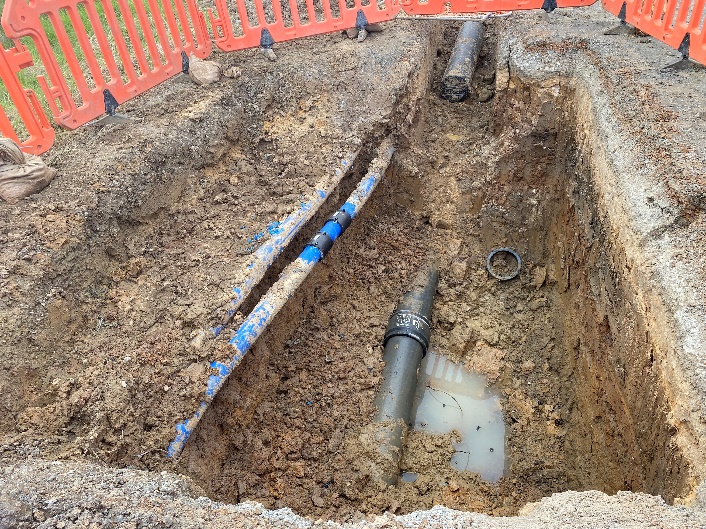
- Over 5000 hours have been put into the construction so far.
- Approximately 2km of pipeline laid along Bonnetts Road and Gill Road using Horizontal Direct Drilling (HDD). Two drills are now on-site to boost productivity by up to 150m of pipe laid per day.
- Earthworks at the bore site are nearly complete in preparation for concrete pads which will contain storage tanks as well as pump and electrical equipment.
- Ducting is 80% complete which will bring the underground power cable to the site, providing power to pump water from the bores through the 14km pipeline to the Kaitāia Water Treatment Plant.
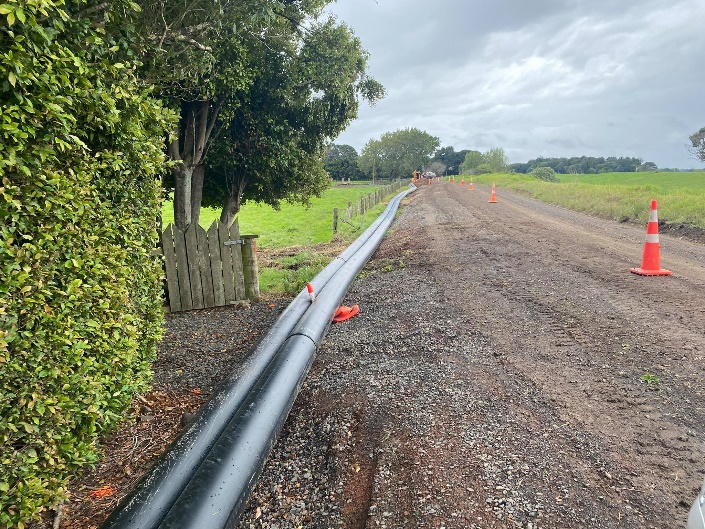
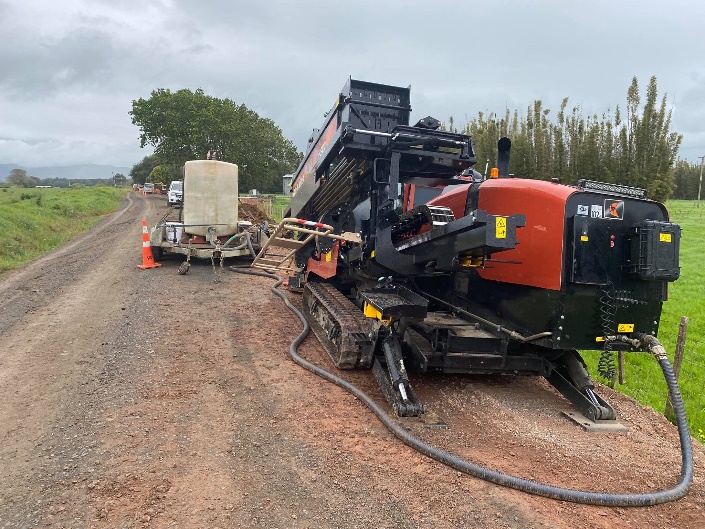
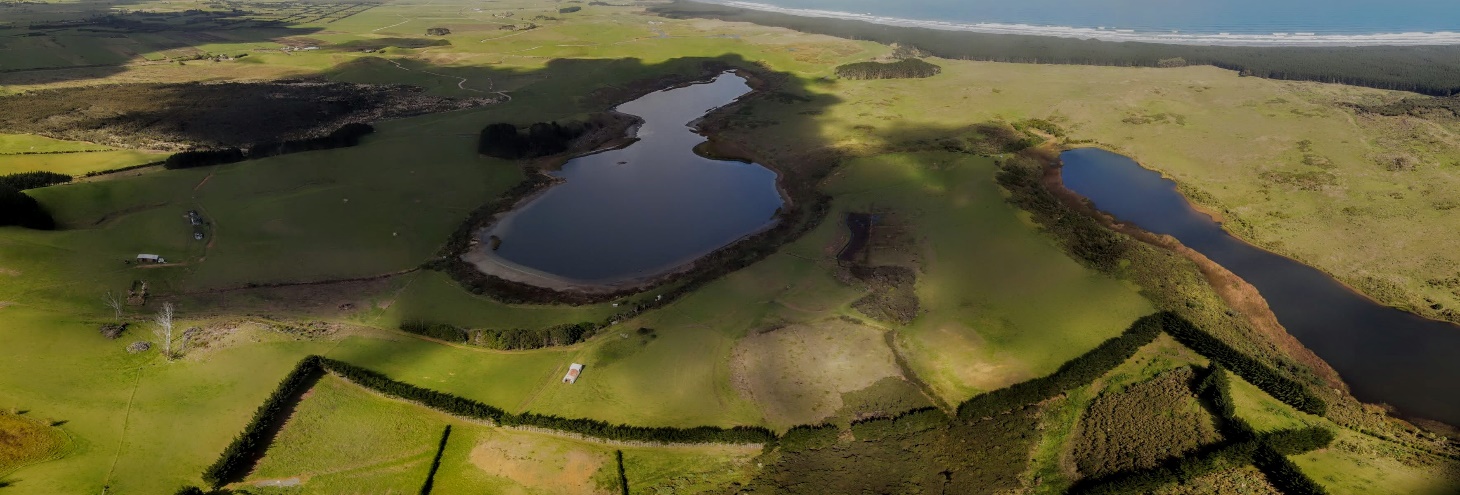
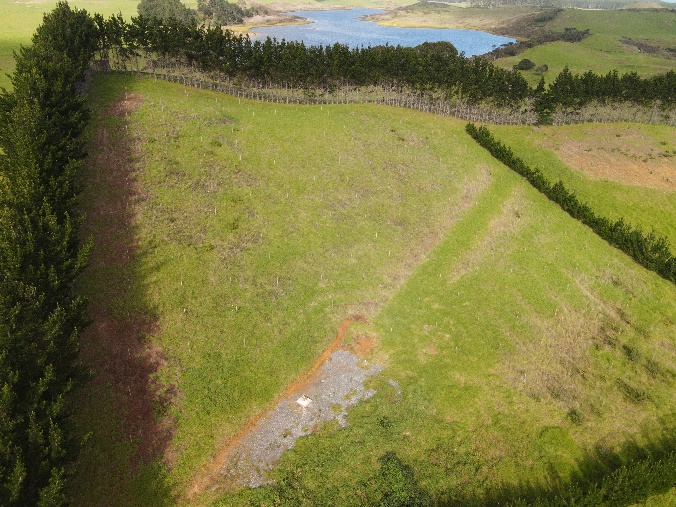
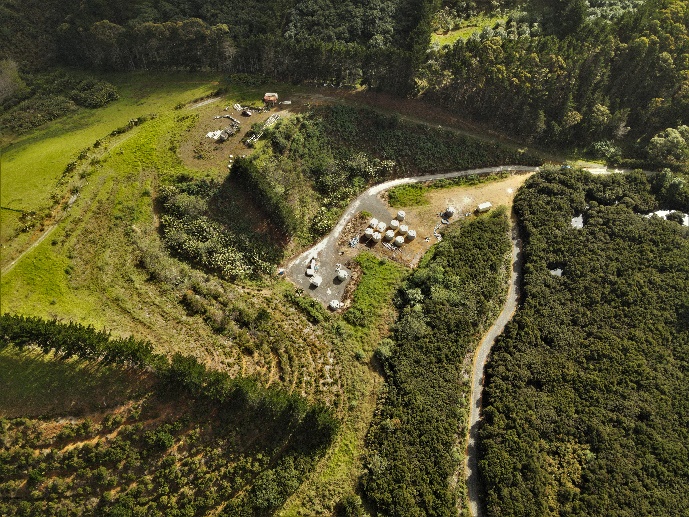
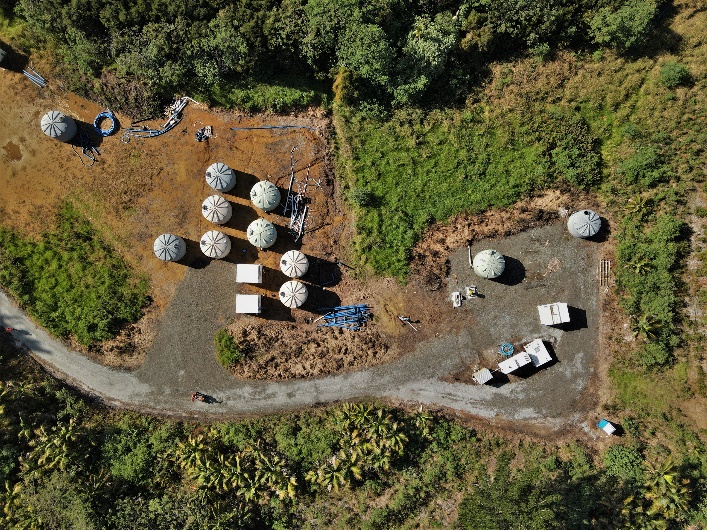
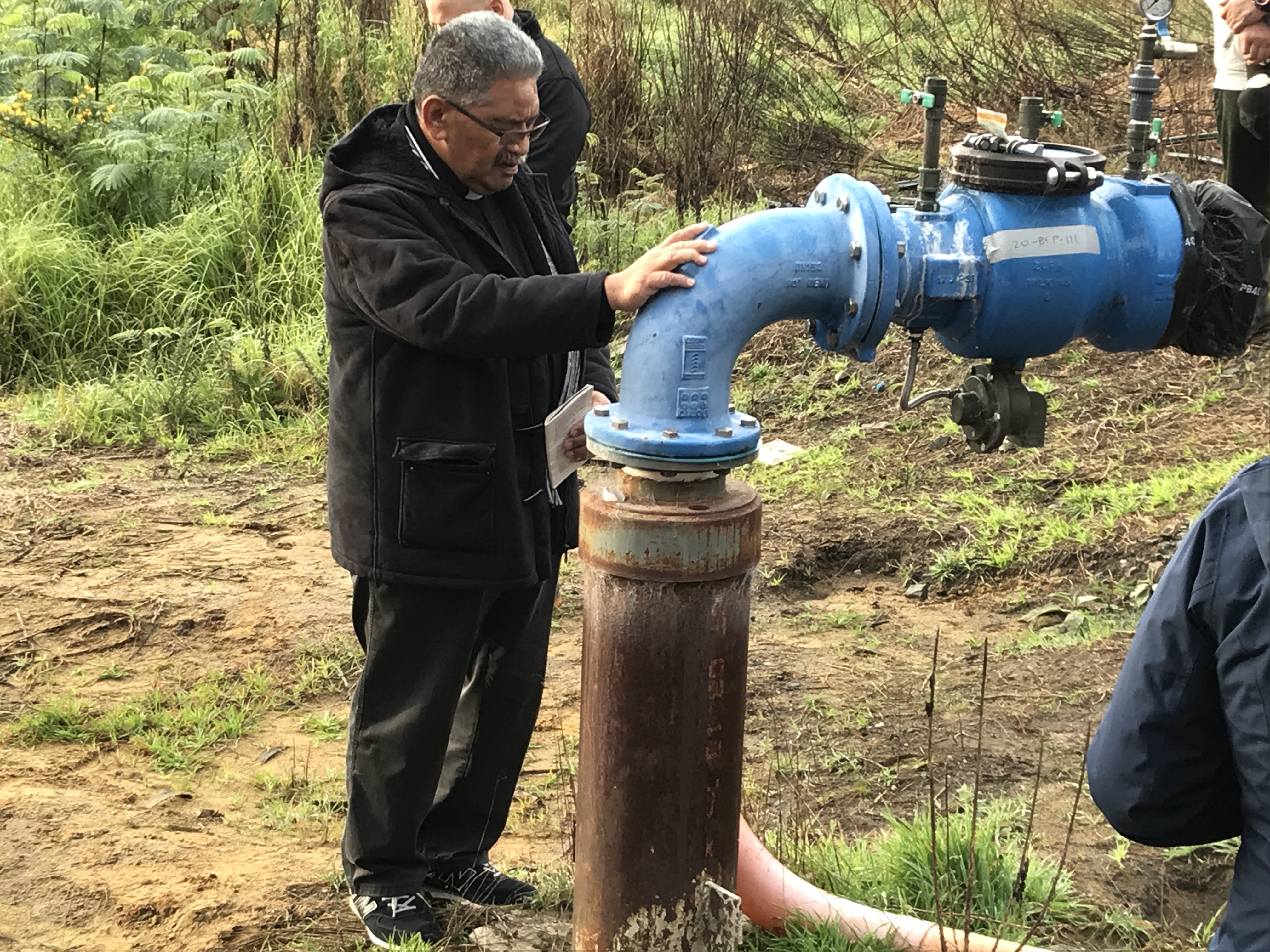
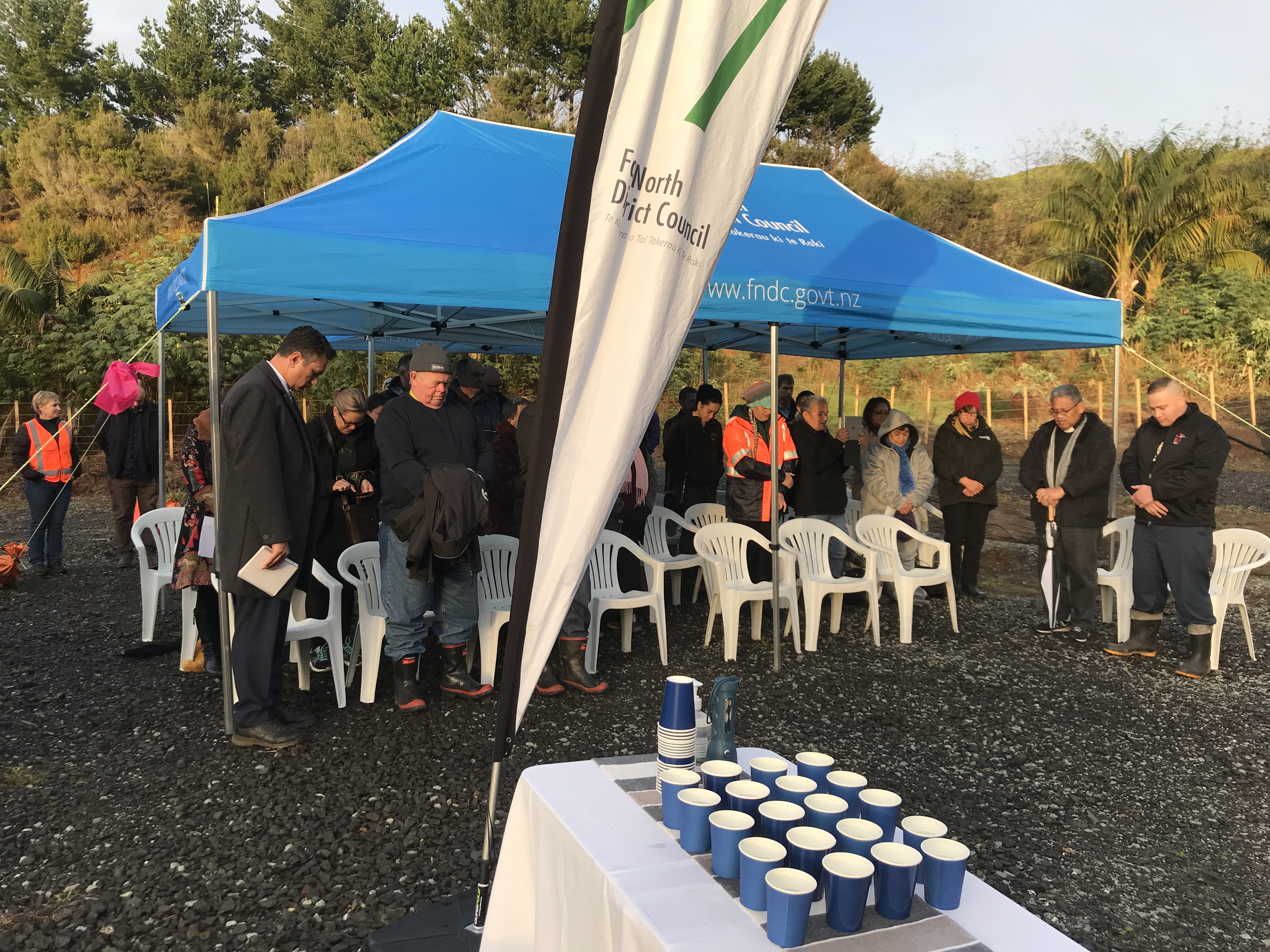
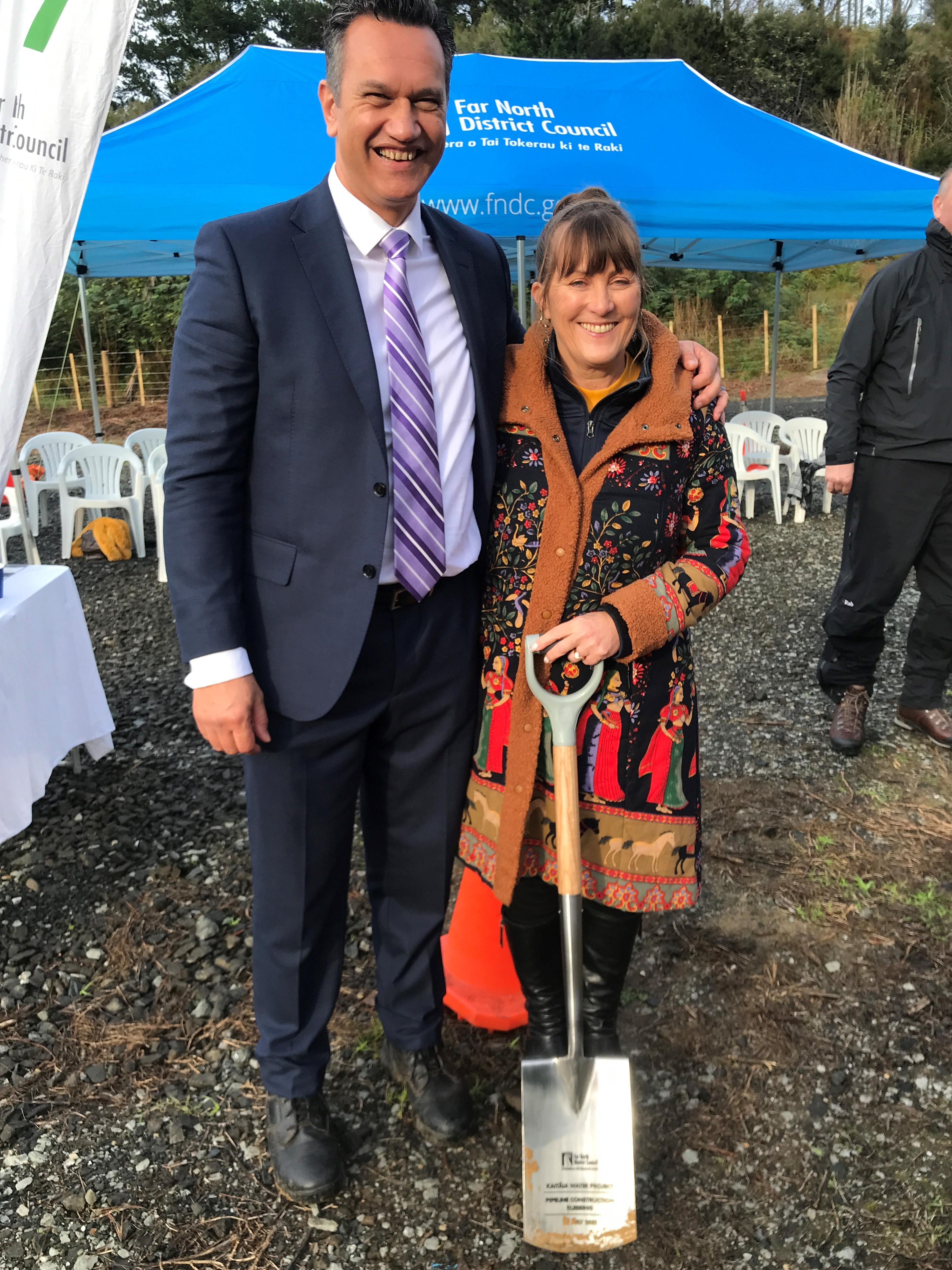
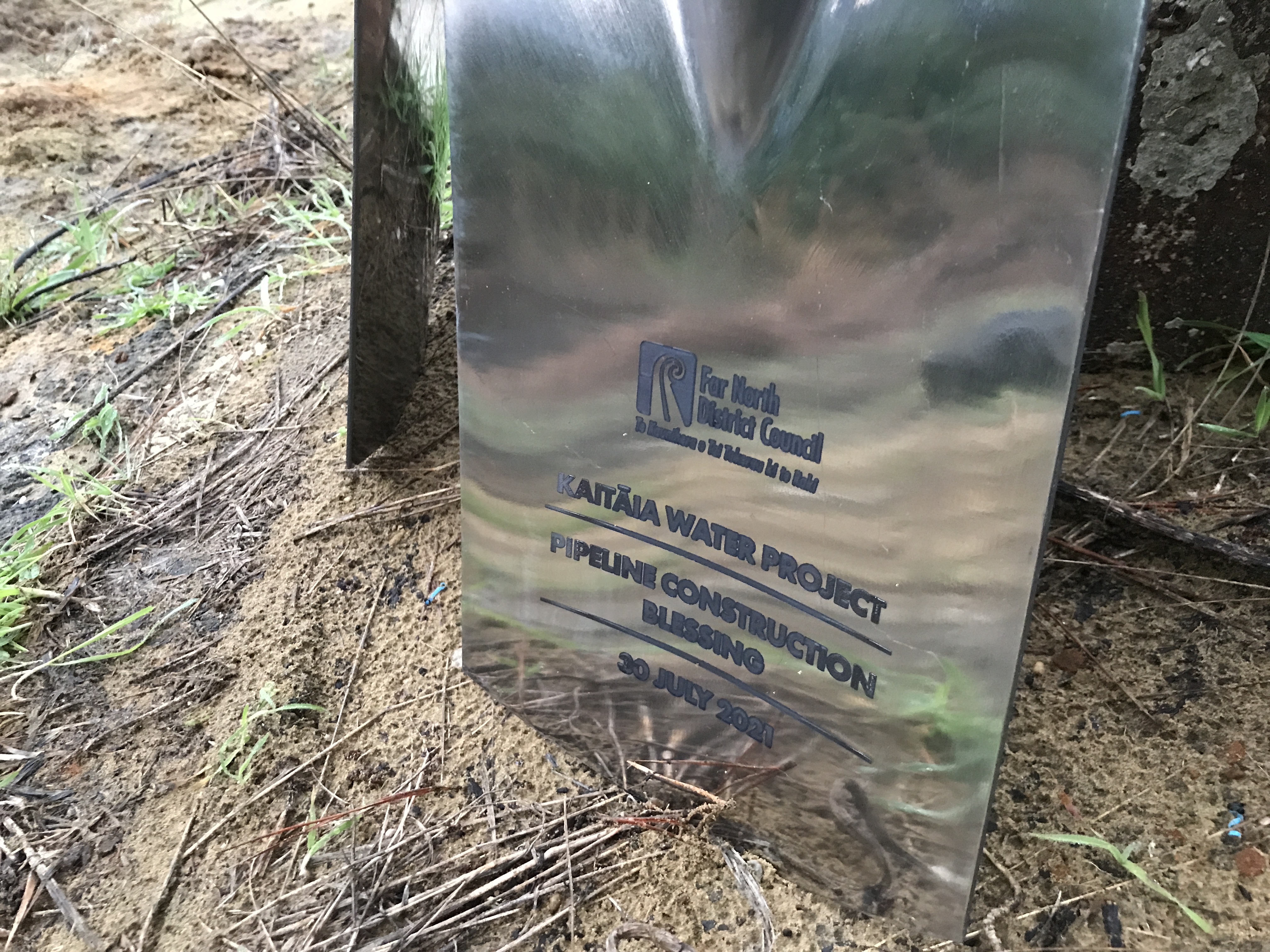
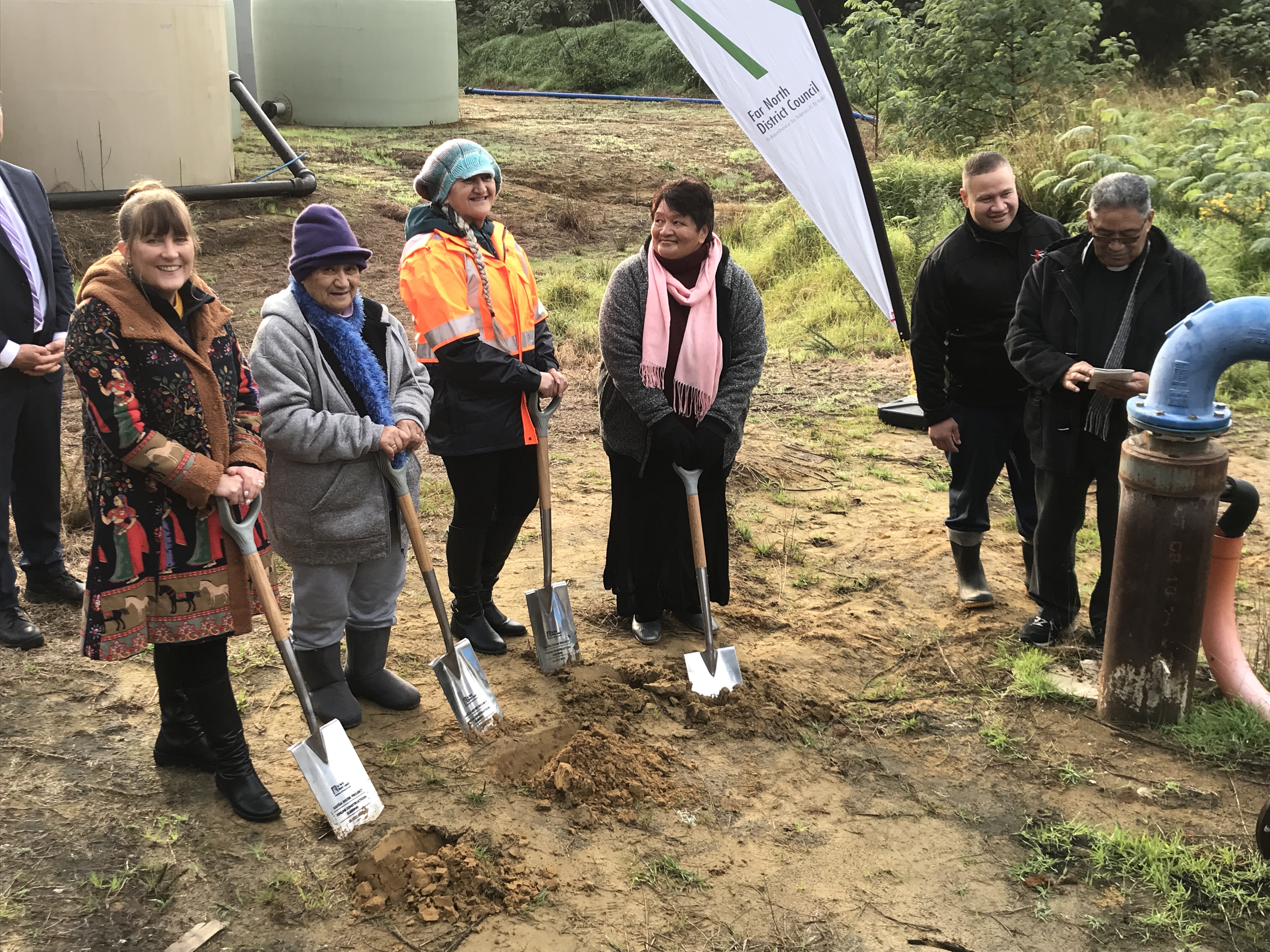
Why is the project happening?
In early 2020, Kaitāia had the strictest (Level 4) water restrictions imposed when it experienced its sixth drought in nine years. Flows in its main water source, the Awanui River, fell to the lowest level since records began 50 years ago. The project will improve the drought-resilience of the Kaitāia water supply by establishing a supplementary water source to the Awanui River.
What are the benefits?
The project provides Kaitāia with a source of high-quality drinking water, reducing the town’s dependence on the Awanui River. This will help to avoid the need for water restrictions during dry summers ensuring a more reliable water supply for households, businesses and industry.
What deals have been reached with local landowners?
In December 2020, the Council purchased privately-owned land at Sweetwater near Awanui where it owned a bore. An agreement has now been reached with landowners to allow the pipeline to be built.
What difference will this project make to water supplies?
It will provide extra potable water to the Kaitāia community, easing pressure on Kaitāia’s main water source, the Awanui River, during dry weather.
What are the employment opportunities?
The project has provided work for Northland businesses and communities who have gained experience and skills that can be deployed on other infrastructure projects.
What testing/monitoring is being done?
The Northland Regional Council (NRC) is responsible for managing the resource consent the council has to take water from the aquifer. The NRC is responsible for monitoring this intake and its effect on neighbouring bores.
Is the Aupōuri aquifer oversubscribed?
The NRC is the agency that manages the consent and ensures use of the aquifer is sustainable.
Will bores owned by local landowners be affected by the Sweetwater bore when it is operational?
The NRC consent conditions require Council to undertake monitoring prior to taking water. This includes monitoring static water levels of bores to ensure there is no impact.
What is the risk of the aquifer being inundated with salt water, making the water supply unusable?
The NRC is responsible for mitigating the risk of saline intrusion impacting groundwater. Questions regarding this should be directed to NRC.
Can anyone tap into the FNDC pipe between the bore and treatment plant (for any purpose)?
No. The consent for this project is to provide a safe and secure supplementary drinking water to Kaitāia. Providing water for any other purpose (e.g. for agricultural use) would be in breach of the consent.
The Council has consent for water take now and also for growth in the future, but is unable to supply any landowners along the pipeline route with direct access to the water at any point from the source to the water treatment plant. This is to ensure that all water users receive safe drinking water from a secure source, pipeline supply and water treatment facility.
In addition, a private connection to the water supply would create potential, unacceptable risks around infiltration into the water supply pipeline. The line is considered raw water until it is treated at the water treatment plant. The revised Drinking Water Standards for New Zealand (2018) required changes to drinking water standards to help keep New Zealanders safe from waterborne illness.
The Council is aware that there are historical connections to other raw water supplies. However, these will be addressed over time.
Location
Bird Road, Awanui 0486 View Map


